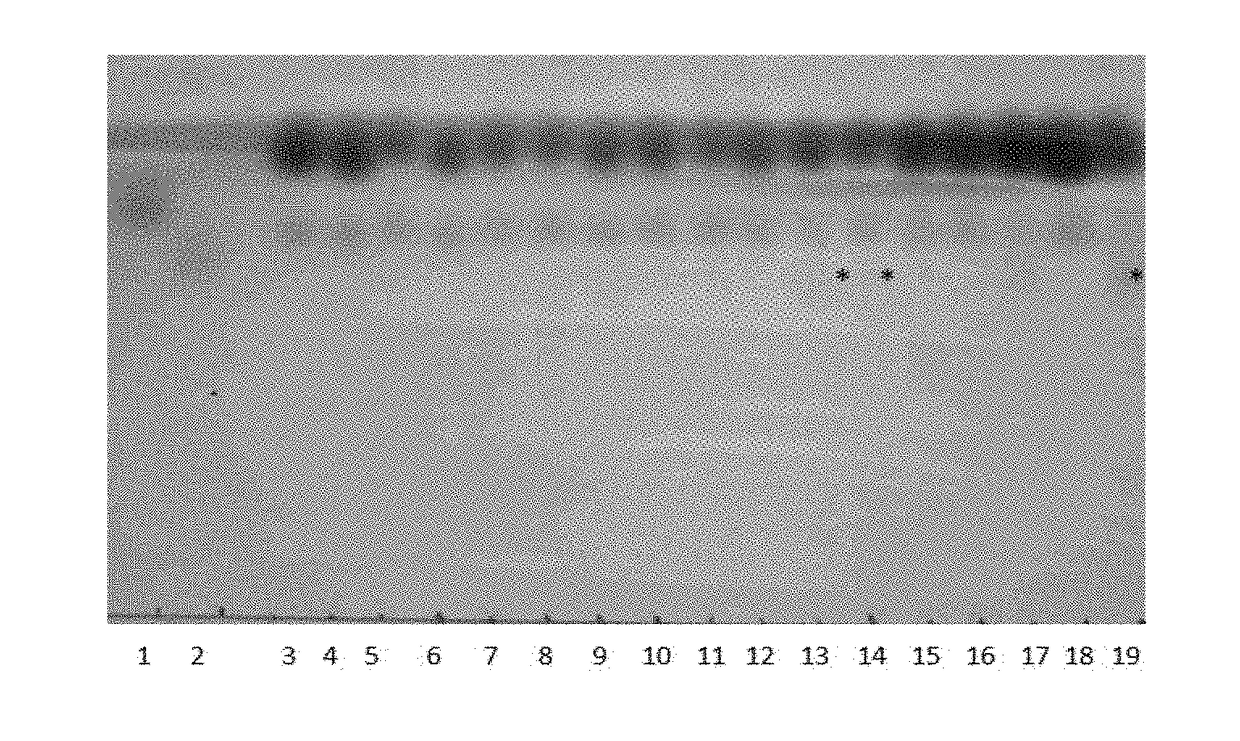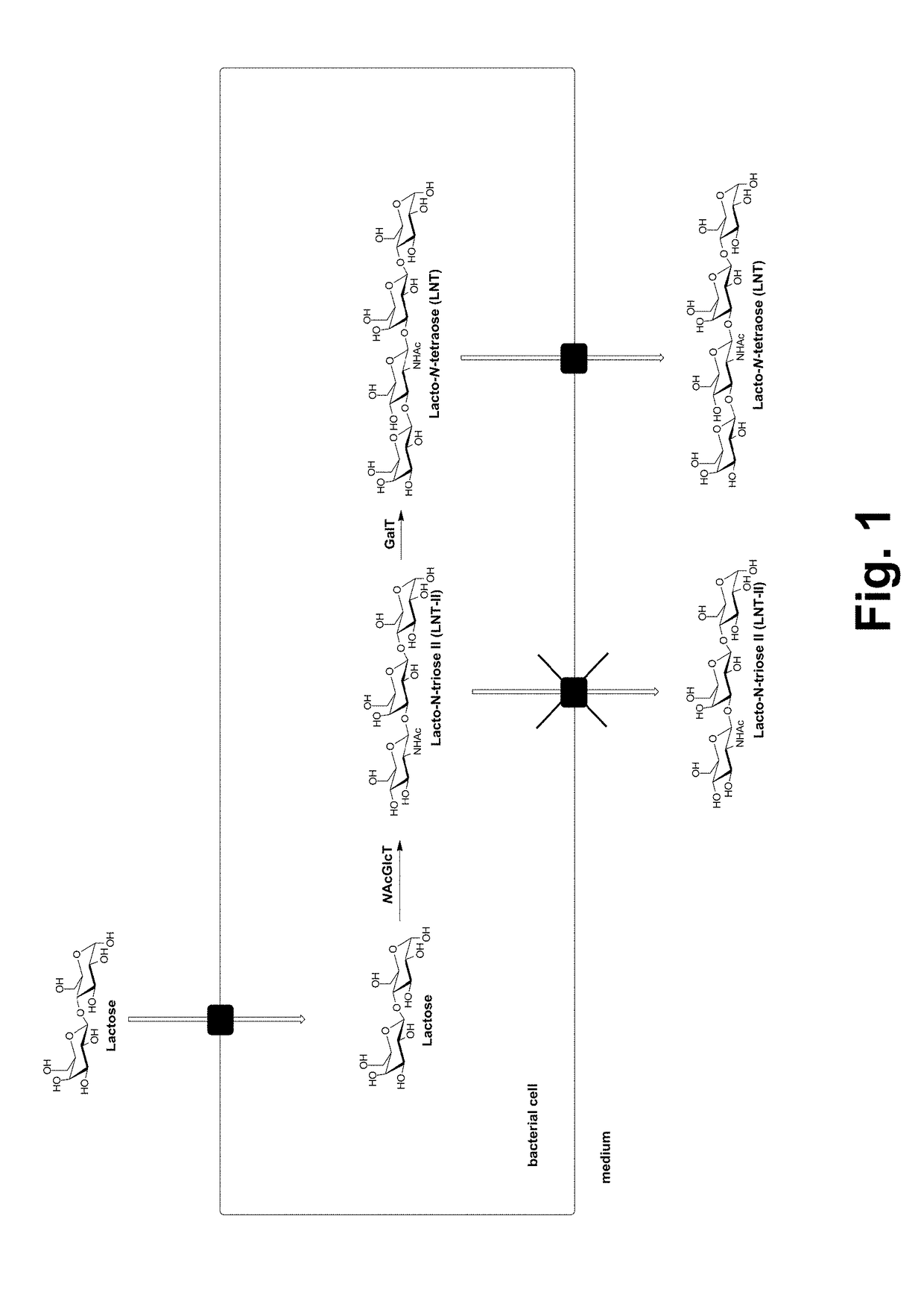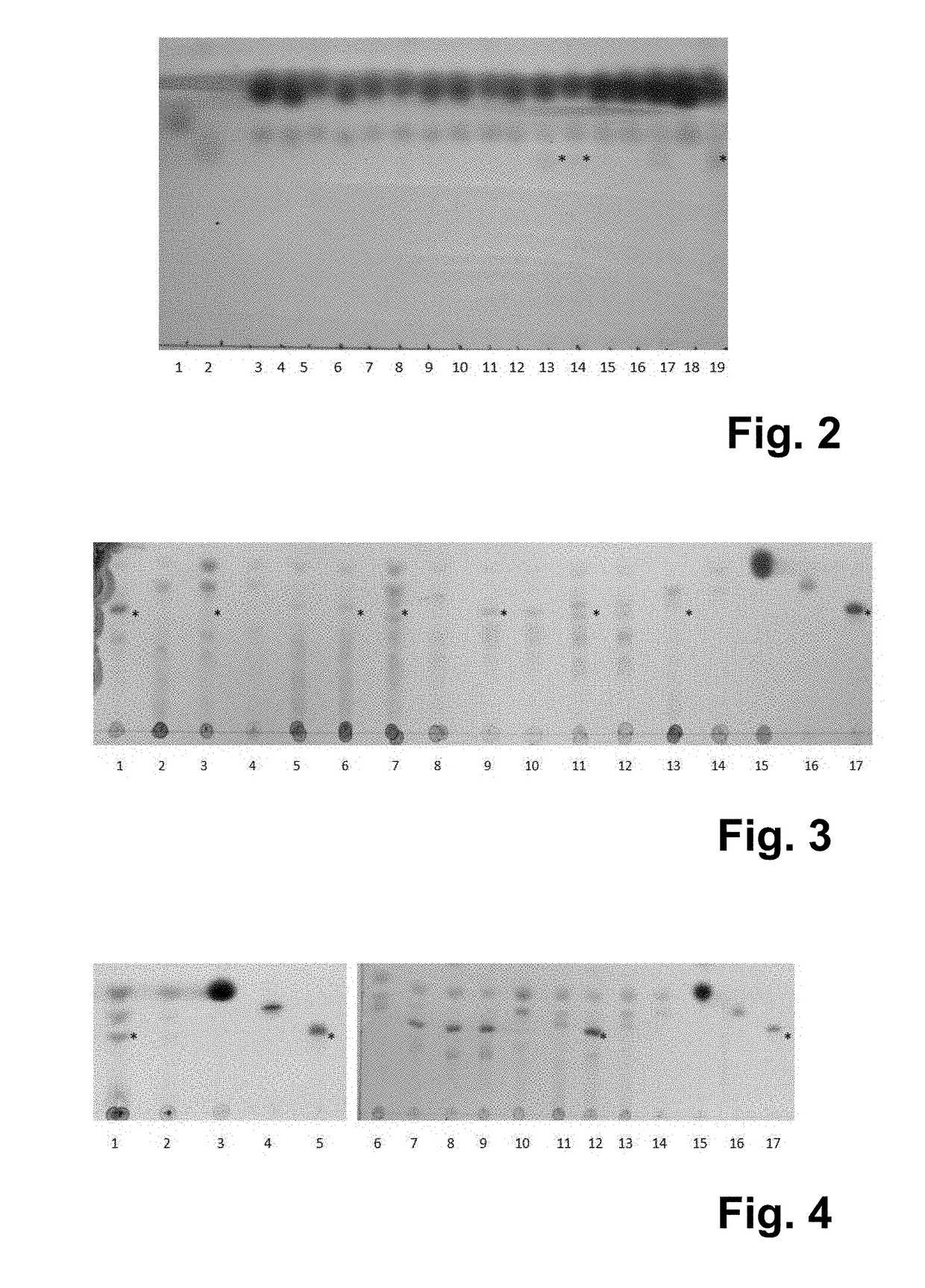Production of human milk oligosaccharides in microbial hosts with engineered import / export
a technology of microbial hosts and oligosaccharides, which is applied in the direction of peptides, enzymology, transferases, etc., can solve the problems of inability to achieve competitive large-scale production processes, undesirable mix of product and precursor oligosaccharides in fermentation medium, and high cost. , to achieve the effect of easy and inexpensive growth
- Summary
- Abstract
- Description
- Claims
- Application Information
AI Technical Summary
Benefits of technology
Problems solved by technology
Method used
Image
Examples
example 1
[0089]Development of an E. coli Lacto-N-Triose II Production Strain
[0090]Escherichia coli BL21(DE3) was used to construct a lacto-N-triose II (LNT-2) producing strain. Metabolic engineering included mutagenesis and deletions of specific genes, respectively, and genomic integrations of heterologous genes. The genes lacZ and araA were inactivated by mutagenesis using mismatch-oligonucleotides as described by Ellis et al., “High efficiency mutagenesis, repair, and engineering of chromosomal DNA using single-stranded oligonucleotides”, Proc. Natl. Acad. Sci. USA 98: 6742-6746 (2001).
[0091]Genomic deletions were performed according to the method of Datsenko and Warner (Proc. Natl. Acad. Sci. USA 97:6640-6645 (2000)). To prevent intracellular degradation of N-acetylglucosamine, genes encoding N-acetylglucosamine-6-phosphate deacetylase (nagA) and glucosamine-6-phosphate deaminase (nagB) were deleted from the genome of the E. coli strain BL21 (DE3) strain. Also genes wzxC-wcaJ were deleted...
example 2
[0094]Batch Fermentation of E. coli BL21 (DE3) 707 Screening Various β-1,3-N-Acetyl-Glycosaminyltransferases
[0095]The gene for the β-1,3-N-acetyl-glucosaminyltransferase PmnagT from Pasteurella multocida subsp. multocida str. HN06 (acc. no. PMCN06_0022) was codon-optimized and synthetically synthesized by GenScript Cooperation (Piscataway, USA). Cloning of the gene occurred by sequence and ligation-independent cloning into the plasmid pET-DUET (Merck KGaA, Darmstadt, Germany). All primer used for cloning are listed in table 3 below.
[0096]E. coli BL21(DE3) 707 (table 2 below) harbouring plamid pET-PmnagT coding for a β-1,3-N-acetyl glucosaminyltransferase was grown at 30° C. in mineral salts medium (Samain et al., J. Biotech. 1999, 72:33-47) supplemented with 2% (wt / vol) glucose and ampicillin 100 μg ml−1. When the cultures reached an OD660 nm of 0.1, gene expression was induced by addition of 0.3 mM IPTG. After four hours of incubation 1.5 mM lactose was added. After an additional i...
example 3
[0098]Generation of an E. coli Lacto-N-Triose II Production Strain Overexpressing a Homologous Sugar Efflux Transporter
[0099]The export of oligosaccharides produced in E. coli was proven to be a limiting factor during the fermentation process. However, trisaccharides like 2′-fucosyllactose and LNT-2 are translocated into the culture supernatant to some extent, thus probably encoding a working sugar efflux transporter. In order to improve the efflux of lacto-N-triose II (LNT-II; GluNAc(β1-3)Gal(β1-4)Glc), the E. coli BL21(DE3) strain 1326 (table 2 below) was used for the screening of a library of sugar efflux transporters (SET). Putative SET proteins from E. coli were amplified from genomic DNA of E. coli BL21 (DE3) and integrated into vector pINT by sequence and ligation-independent cloning. Using the example of the gene yjhB, the primer 2567, 2568, 2526 and 2443 were used, generating the plasmid pINT-yjhB. The primer sequences used for cloning are listed in table 3 below.
[0100]E. c...
PUM
| Property | Measurement | Unit |
|---|---|---|
| flow rate | aaaaa | aaaaa |
| pore size | aaaaa | aaaaa |
| total volume | aaaaa | aaaaa |
Abstract
Description
Claims
Application Information
 Login to View More
Login to View More - R&D
- Intellectual Property
- Life Sciences
- Materials
- Tech Scout
- Unparalleled Data Quality
- Higher Quality Content
- 60% Fewer Hallucinations
Browse by: Latest US Patents, China's latest patents, Technical Efficacy Thesaurus, Application Domain, Technology Topic, Popular Technical Reports.
© 2025 PatSnap. All rights reserved.Legal|Privacy policy|Modern Slavery Act Transparency Statement|Sitemap|About US| Contact US: help@patsnap.com



